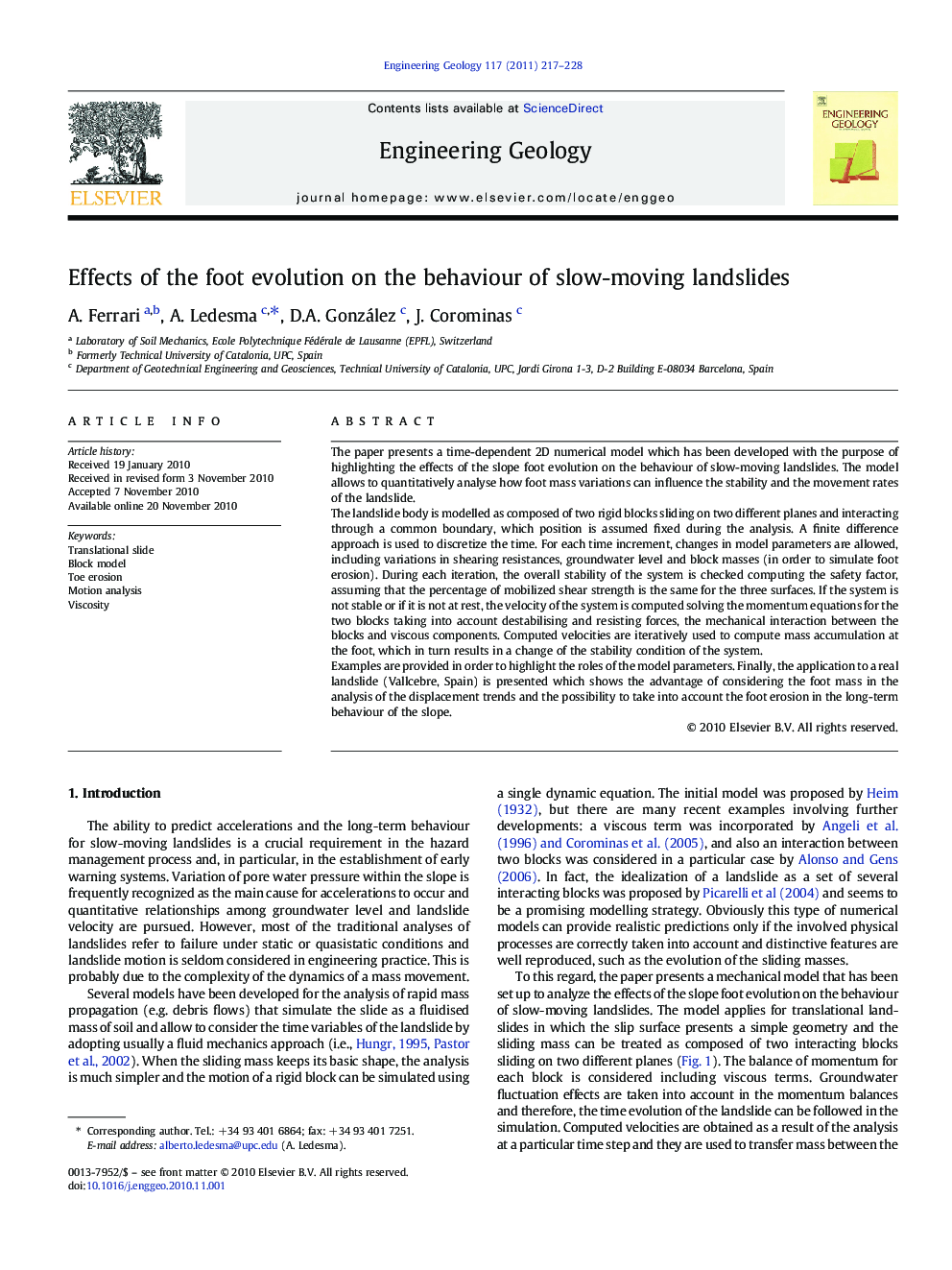| Article ID | Journal | Published Year | Pages | File Type |
|---|---|---|---|---|
| 4744235 | Engineering Geology | 2011 | 12 Pages |
The paper presents a time-dependent 2D numerical model which has been developed with the purpose of highlighting the effects of the slope foot evolution on the behaviour of slow-moving landslides. The model allows to quantitatively analyse how foot mass variations can influence the stability and the movement rates of the landslide.The landslide body is modelled as composed of two rigid blocks sliding on two different planes and interacting through a common boundary, which position is assumed fixed during the analysis. A finite difference approach is used to discretize the time. For each time increment, changes in model parameters are allowed, including variations in shearing resistances, groundwater level and block masses (in order to simulate foot erosion). During each iteration, the overall stability of the system is checked computing the safety factor, assuming that the percentage of mobilized shear strength is the same for the three surfaces. If the system is not stable or if it is not at rest, the velocity of the system is computed solving the momentum equations for the two blocks taking into account destabilising and resisting forces, the mechanical interaction between the blocks and viscous components. Computed velocities are iteratively used to compute mass accumulation at the foot, which in turn results in a change of the stability condition of the system.Examples are provided in order to highlight the roles of the model parameters. Finally, the application to a real landslide (Vallcebre, Spain) is presented which shows the advantage of considering the foot mass in the analysis of the displacement trends and the possibility to take into account the foot erosion in the long-term behaviour of the slope.
Research Highlights►Two-blocks model can be used to simulate translational landslide behaviour ►Motion and interaction between blocks can reproduce landslide dynamics ►The toe block may play an important role on the overall dynamics ►Application to a real case highlights the utility of the model
